Arizona Wild Flowers
Pictures, Photos, Images
Descriptions, Information, Reviews.
Desert Tobacco, Nicotiana trigonophylla.
We Are Proud Of Our SafeSurf Rating!
Click On Any Of The Following Links By Amazon.Com
For Books, & Videos About Wildflowers Of Arizona & The Southwest USA. No Obligation!
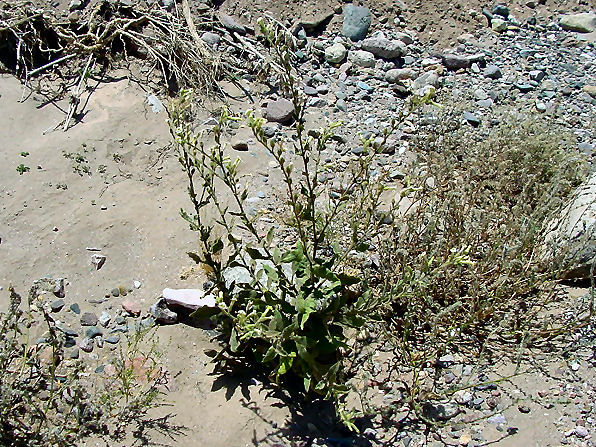 |
| Desert Tobacco, Nicotiana trigonophylla. |
|---|
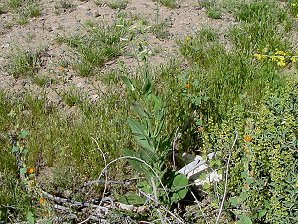 | |
| Desert Tobacco Nicotiana trigonophylla. | Desert Tobacco Nicotiana trigonophylla. |
|---|---|
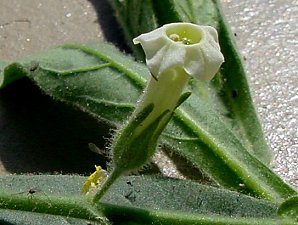 | 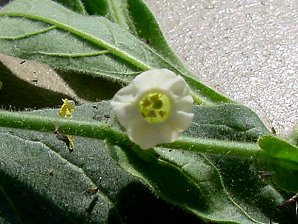 |
| Desert Tobacco Nicotiana trigonophylla. | Desert Tobacco Nicotiana trigonophylla. |
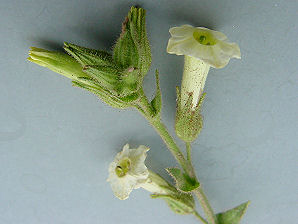 |  |
| Desert Tobacco Nicotiana trigonophylla. | Desert Tobacco Nicotiana trigonophylla. |
Desert Tobacco.
We wish to thank Wikipedia, the free encyclopedia for some of the information on this page. We share images and information with Wikipedia. Nicotiana trigonophylla is an annual, biannual, or sometimes a short-lived perennial. It stands 1-3 feet in height. Large plants have numerous multi-branched stems arising from their bases. The large leaves are oblong, green, and clasp the stem. They become smaller as they near the end of the branches� flowering top. The small, tubular, cream-colored, greenish white flowers form at branch ends. The seed capsules contain many small brown seeds. The entire plant is sticky and covered with small hairs. It is commonly found in Arizona and parts of New Mexico. Look for this native plant in disturbed soils, vacant lots, trail and roadsides, flood plains, and along washes and drainages. The oval to lance-shaped leaves are 2 to 6 inches long and covered with soft, short hairs. They grow opposite each other on the stem, attached directly at the base. The five-lobed, greenish-white or yellowish, trumpet-shaped flowers are about 0.5 to 1.5 inches long. All parts of desert tobacco contain the alkaloids nicotine and anabasine as toxic agents. Therefore, all parts of this plant are considered poisonous.
Quick Notes:
Height: Up To About 16 - 36 Inches Tall.
Flowers: Flowers white to pale yellow to greenish-white, tubular, to 3/4" long.
Flowering Time: Mid March - November.
Seeds & Seed Pods: The seed capsules contain many small brown seeds.
Fruit: The fruit is up to 1 3/4 inches by 3 inches, with an egg shape, the green fruit ripens over about a 45 day period of time and turns a dark red color then just before the fall rainy season, it splits open to reveal bright-red, pulpy flesh which many of the desert creatures seem to enjoy. This ripening time would be about the last half of June into Mid - July. This fruit was a food source to the Native Americans of Arizona who used the flesh, seeds and juice.
Leaves: Leaves are simple, smooth-edged, oval to lance-shaped, sticky, dark green, up to about 6" long.
Found: Throughout Arizona and New Mexico.
Hardiness:
Soil pH requirements:
Sun Exposure:
Elevation: Usually at 0 - 3,600 Feet. But, said to grow up to 6,900 feet.
Habitat: Found in gravelly-sandy washes and river edges.
Miscellaneous: Flowering Photos Taken April 10, 2003. In A Wash, Near Wickenburg, Arizona.
|
We Are Proud Of Our SafeSurf Rating!
Click On Any Of The Following Links By Amazon.Com
For Books, & Videos About Wildlife Of Arizona & The Southwest USA. No Obligation!
| © 1966 - Present, Audrey, Eve, & George DeLange |
